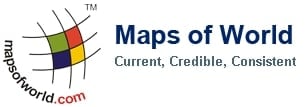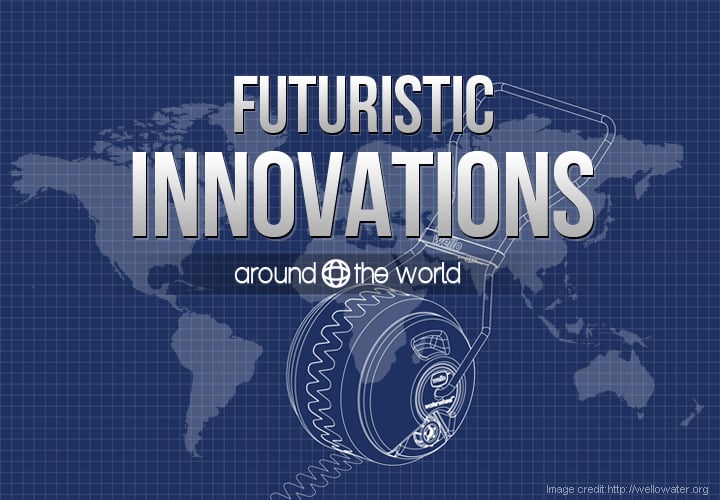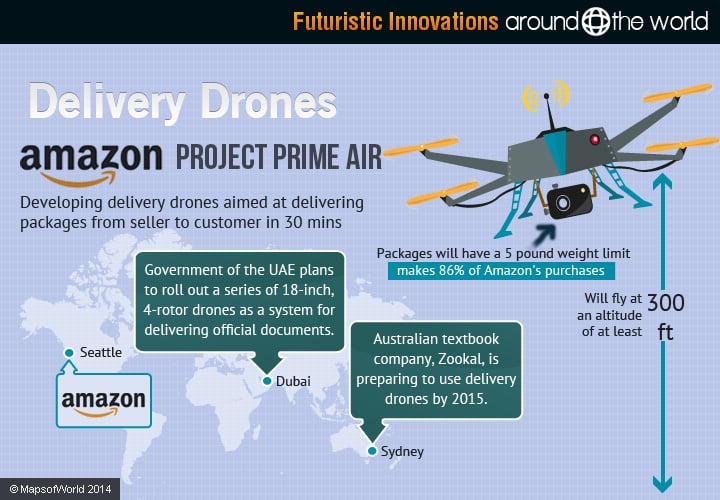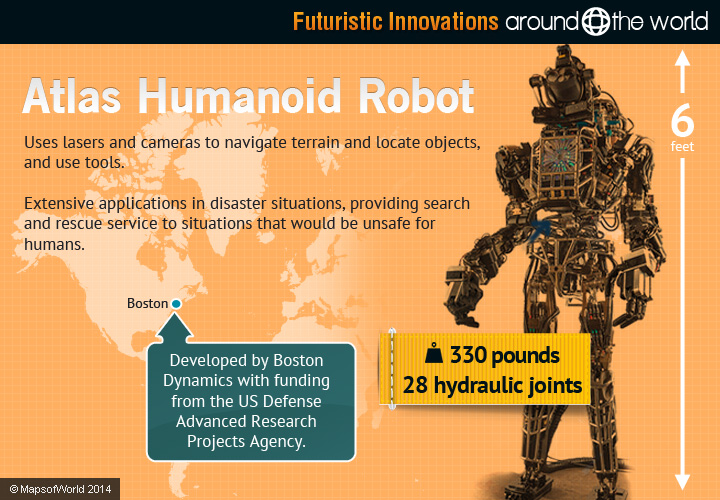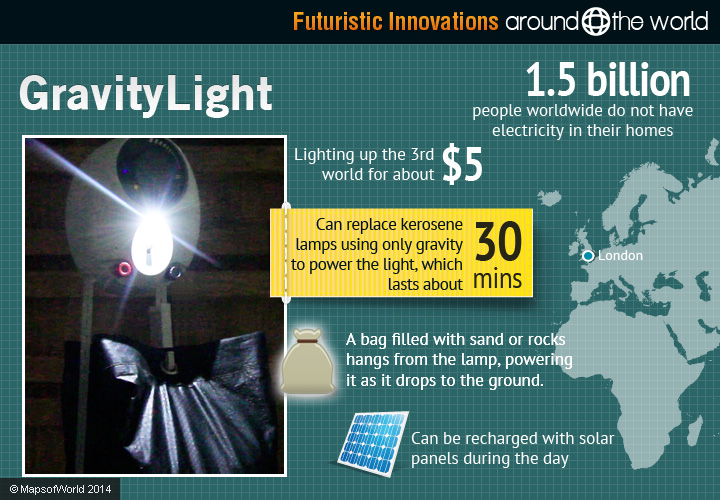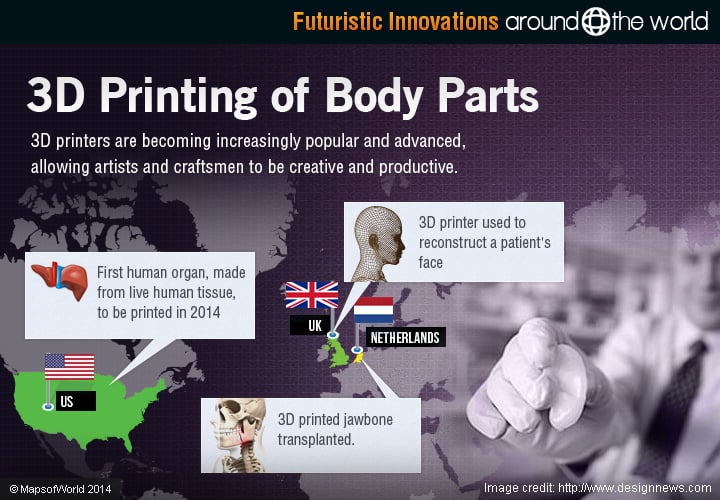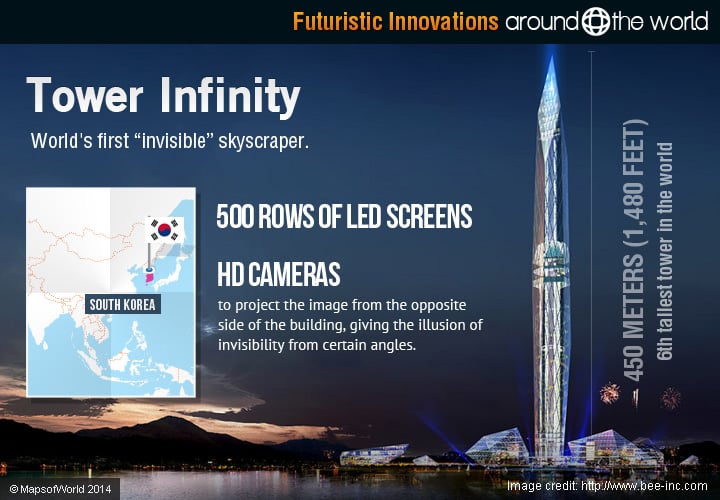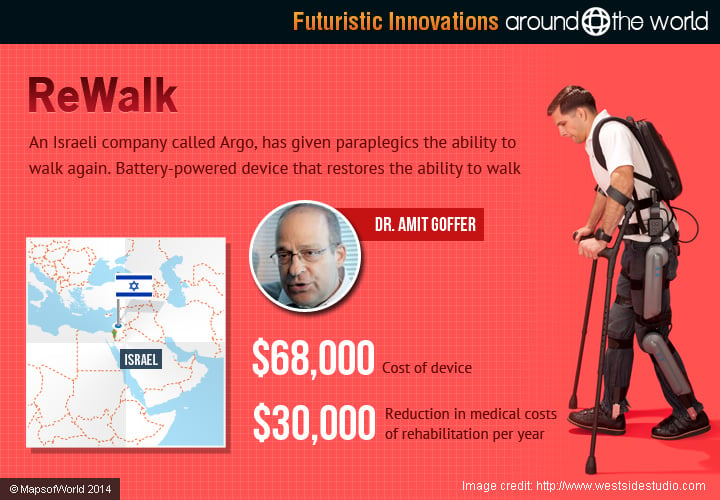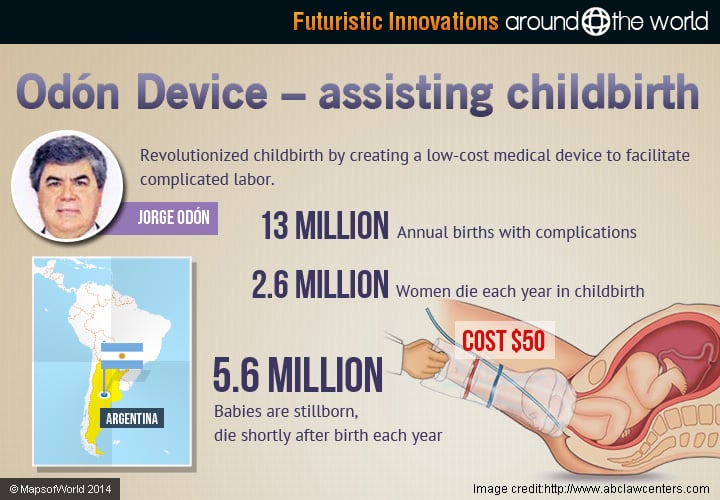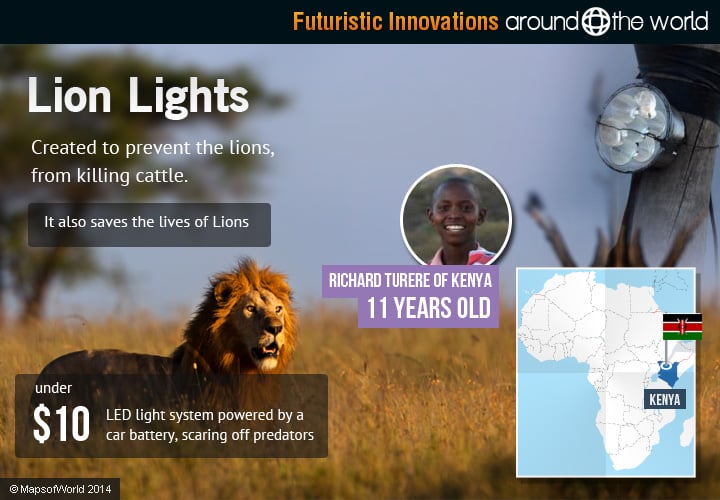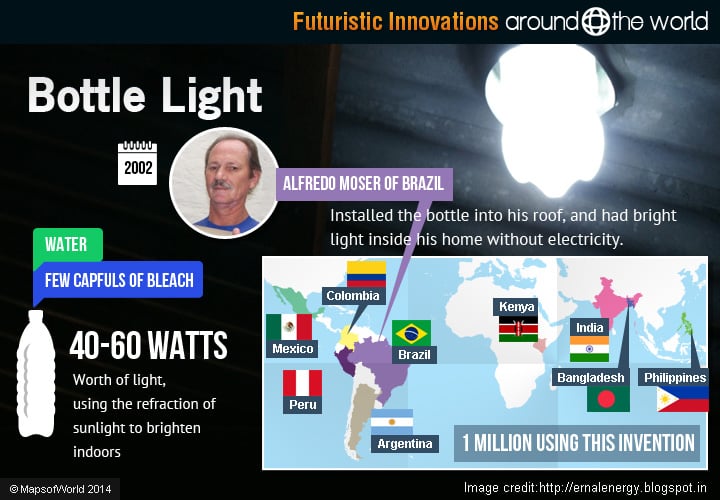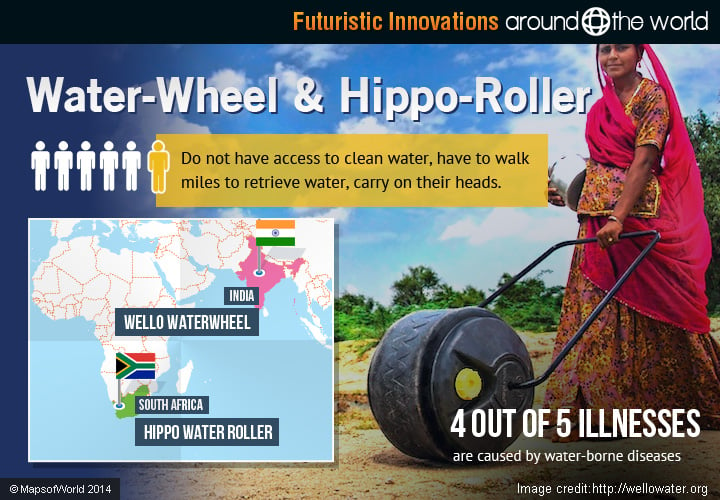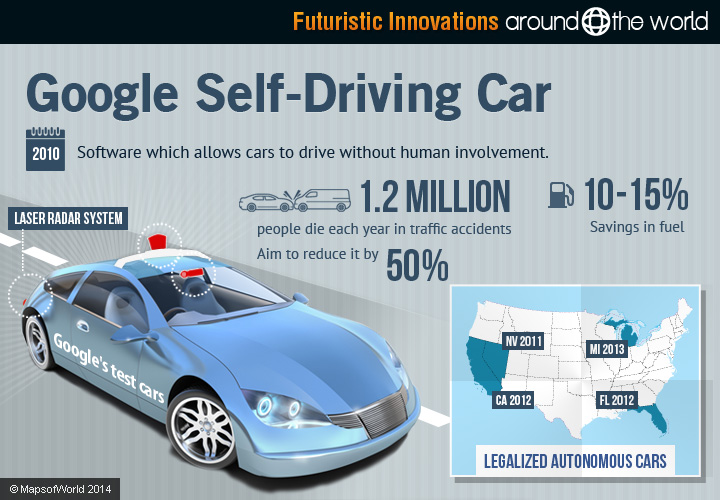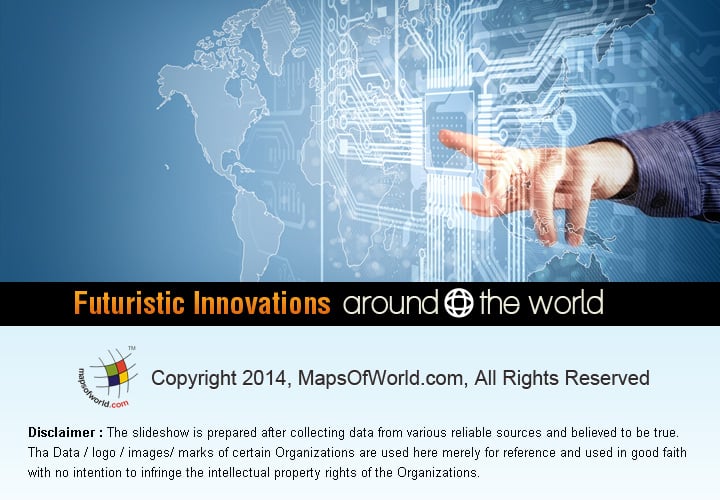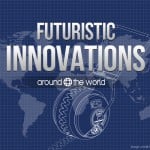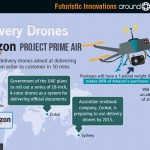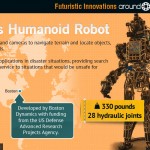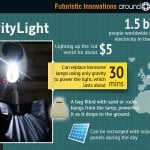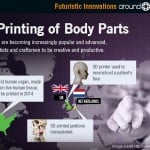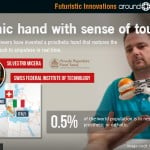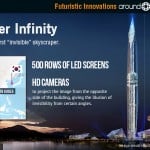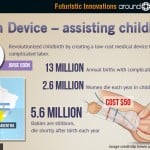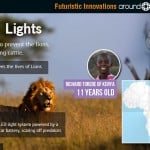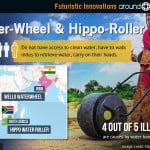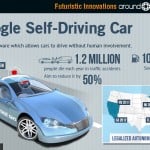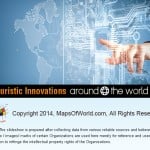USA – Mountain View, CA Google self-driving car
In 2010, Google revealed that it was developing software that allows cars to drive without human involvement. Google’s test cars, which are outfitted in a $150,000 system, use a laser radar system that creates a 3D map, enabling the car to maneuver through traffic. The technology is currently being tested on the Toyota Prius, Audi TT, and Lexus RX450h.
The benefits of an autonomous car are extensive: improving safety, relieving traffic, reducing average trip times by finding the most efficient route and saving fuel by driving efficiently, with 10-15% savings. Applications for the car include granting more freedom to the blind, courier services, and Google just obtained a patent for an ad-powered taxi service.
There are over 10 million car accidents per year in the United States, and the vast majority of those are caused by the drivers themselves. The WHO reports that over 1.2 million people die each year in traffic accidents, and Google wants to reduce that number by half. The average American has a commute time of 52 minutes (US DOT), and driverless cars can allow people to use their time more productively.
Nevada became the first state to legalize the operation of autonomous cars in 2011, followed by Florida and California in 2012, and Michigan in 2013. Some laws are for testing purposes only, requiring a human in the driver seat.
India Wello WaterWheel (and) South Africa Hippo-Roller
About 1 in 6 people around the world do not have access to clean water, having to walk miles to retrieve water, and carrying the heavy water back, often on their heads. The WHO reports that water-borne sickness is the 2nd leading cause of death in children under 5, and 4 out of 5 illnesses in the developing world are caused by water-borne disease like dysentery and diarrhea.
India’s Wello Waterwheel enables users to wheel 3-5 times the water per trip, with its 50 liters rolling drum. The South African-based Hippo Water Roller has a capacity for 90 liters of water. The sealed lid helps prevent contamination.
Since transporting water takes up an estimated 25% of a woman’s day in these regions, the invention allows women to have more time for other activities, increasing the household’s income and health, and giving young girls time to get an education.
Brazil Bottle Light (or Liter of Light)
In 2002, Alfredo Moser of Brazil filled a plastic two-liter bottle with water and a few capfuls of bleach, installed the bottle into his roof, sealing it into place, and had bright light inside his home without electricity. The bottle lights, or Moser lights, use the refraction of sunlight to brighten the indoors with 40-60 watts worth of light, though only during the day. This simple and inexpensive invention has changed an estimated 1 million lives around the developing world, spreading to the Philippines, Bangladesh, Colombia, India, Kenya, Mexico, Peru, and Argentina, among others. The lights reduce the use of toxic kerosene as well as tackling carbon footprints from electricity. The technology also has applications for hydroponic farms.
Kenya Lion Lights
Invented by Richard Turere of Kenya when he was just 11 years old, Lion Lights were created to prevent the lions, from killing cattle on his family’s farm just outside of Nairobi National Park. For under $10, an LED light system powered by a car battery attached to solar panels, the lights flicker on and off during the night, scaring off predators. Not only does the invention protect the cows, it also prevents humans, and the lions too – fewer than 2,000 lions remain in Kenya, down from 15,000 about 10 years ago. These endangered creatures are often hunted as a result of their conflict over the cattle, and Kenya has estimated that more than 100 lions are lost every year. Turere’s idea has spread to about 75 farms across his region so far, and earned him a scholarship and an invitation to the TED 2013 conference in California.
Argentina Odón Device – assisting childbirth
Argentinian auto mechanic, Jorge Odón has revolutionized childbirth by creating a low-cost medical device to facilitate complicated labor. The Odón Device supports and protects the baby’s head as it emerges, helping to extract the baby in cases of obstructed or prolonged labor.
There are 13 million annual births with serious complications – about 10% of births worldwide. About 260,000 women die each year in childbirth, and 5.6 million babies are stillborn, or die shortly after birth each year.
With an estimated cost of $50 per unit, the invention can be used in developing countries to prevent the deaths of mothers and babies, taking the place of cesarean sections where they cannot be performed, and reducing the risk of infection.
ISRAEL ReWalk
Nothing short of a miracle, an Israeli company called Argo, has given paraplegics the ability to walk again. Invented by Dr. Amit Goffer, who is paralyzed himself, the exoskeleton suit called ReWalk is a battery-powered device that restores the ability to walk by moving the knee and hip joints, and is controlled by a remote. The suit is used in combination with crutches, which the user must be able to use to support his body weight. The suit has personal daily use applications, as well as rehabilitation uses, to strengthen bones and muscles. Personal ReWalk devices cost about $68,000, but can reduce medical costs of rehabilitation by about $30,000 per year.
South Korea Tower Infinity
South Korea is making its skyline one of the world’s most advanced with the construction of the world’s first “invisible” skyscraper. The ecoprism tower will use 500 rows of LED screens and HD cameras to project the image from the opposite side of the building, giving the illusion of invisibility from certain angles. Approved for construction in 2013, the building will have 15 floors, standing 450 meters (1,480 feet) tall, making it the 6th tallest tower in the world, and it will have the 3rd highest observatory.
Switzerland and Italy Bionic hand with sense of touch
A team of neural engineers from Italy and Switzerland have invented a prosthetic hand that successfully restores the sense of touch to amputees in real time. Silvestro Micera at Scuola Superiore Sant’Anna, Italy and the Swiss Federal Institute of Technology Lausanne have implanted electrodes inside the nerve bundles in the patients arm, which are connected to pressure sensors on the fingers and palm of the robotic hand, which carry sensations from the hand to the brain. The first trial was on patient Dennis Aabo Sørensen, who was able to differentiate between soft and hard objects while blindfolded in a report published in February 2014. There are about 2 million people in the United States alone who have undergone an amputation. An estimated 0.5% of the world population is in need of a prosthetic or orthotic.
United Kingdom / the Netherlands / San Diego, California USA 3D printing of body parts
3D printers are becoming increasingly popular and advanced, with personal models allowing artists and craftsmen to be creative and productive. However, the use of 3D printers in biotechnology could drastically change our world. In the United Kingdom, doctors have used a 3D printer to build and implant reconstruct a patient’s face.
In the Netherlands, an 83 year-old Belgian woman became the first person to receive a 3D printed transplant jawbone, which was made precisely to fit by a 3D printing firm in Leuven, Belgium.
A San Diego, California 3D printing firm, Organovo, predicts that the first human organ, a liver, made from live human tissue, will be printed in 2014. An estimated 18 people die waiting for an organ transplant each day.
London, UK GravityLight
GravityLight is lighting up the 3rd world for about $5, with its simple technology that uses no batteries or fuel. About 1.5 billion people worldwide do not have electricity in their homes, and often use dangerous kerosene as their light source, which is a fire hazard and expensive, using up from 10-20% of the household income. GravityLight can replace kerosene lamps using only gravity to power the light, which lasts about 30 minutes. A bag filled with sand or rocks hangs from the lamp, powering it as it drops to the ground, and can be recharged with solar panels during the day, saving families money and lives.
Boston, Massachusetts USA Atlas humanoid robot
Atlas, a bipedal, humanoid robot uses lasers and cameras to navigate terrain and locate object, and use tools. The robot has extensive applications in disaster situations, providing search and rescue service to situations that would be unsafe for humans, inspired by the 2011 Fukushima nuclear disaster. Standing 6 feet tall and weighing 330 pounds, Atlas has 28 hydraulic joints, two arms, and two legs. The robot is being developed by Boston Dynamics with funding from the US Defense Advanced Research Projects Agency, and it will compete in the DARPA Robotics Challenge later in 2014.
Seattle, Washington USA / Sydney, Australia / Dubai, UAE Delivery Drones
Amazon has been developing a delivery drone aimed at delivering packages from seller to customer in 30 minutes, using unmanned flying drones, in a project they call Prime Air. These drones, nicknamed octocopters, are not expected to be used until 2015, and must first overcome Federal Aviation Administration regulations. The octocopters will have a 10-mile radius to start, and will fly at an altitude of at least 300 feet. Packages will have a 5 pound weight limit, which makes up about 86% of Amazon’s purchases.
An Australian textbook company, Zookal, is also preparing to use delivery drones by next year. Other future uses may soon range from pizza and burrito delivery to medical supply delivery to military zones.
The government of the UAE plans to roll out a series of 18-inch, 4-rotor drones as a system for delivering official documents, driver’s licenses, and medicine using the unmanned aircraft.
